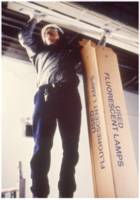
Laws and Regulations
Information on Spent Lighting
A Summary of the Universal Waste Rule and RCRA Subtitle C Hazardaous Waste Regulations fo Businesses.
- The Federal Rules
- RCRA and UWR Definitions
- Who does this rule apply to?
- Where can the waste go?
- How does using the UWR to recycle simplify disposal?
(see below) State Strigency Comparisons
State-by-State Information
EPA Fact Sheet
Transportation Issues
How does using the UWR to recycle simplify disposal?
If you choose to dispose of lamps under the more stringent full Subtitle C hazardous waste requirements, the following applies: you must obtain an EPA ID, a HW manifest is required for transportation, and a certified HW hauler must be used for transportation. This option could greatly increase administrative, shipping and disposal costs.
If you recycle lamps under the UWR, you are exempt from the HW manifest requirements. The UWR allows the use of a record of shipment like a bill of lading (BOL). It does not require the analytical testing or reporting of lamps destined for recycling.
If you recycle lamps under the UWR, you may use a common carrier instead of a certified HW haulerfor shipment to a recycling facility. This lowers shipping costs
Intentional lamp breakage is considered “treatment,” and treatment of lamps (e.g., drum-top crushing) requires compliance with full Subtitle C requirements unless your state has authorized regulations allowing lamps to be crushed under the UWR. See the State-by-State Stringency Comparison Table. Also see the Crushing section of this document.
If you recycle lamps under the UWR, you may collect lamps without a permit. The UWR also allows handlers such as businesses and building owners to store lamps in any amount up to one year.
If you recycle lamps under the UWR, there are minimal training requirements for employees. The labeling requirements for this waste are also less burdensome.

